Date: 2011
Last year’s federal healthcare reform legislation (officially known as The Patient Protection and Affordable Care Act) goes into effect in phases over the course of the next several years. The Act’s wide-ranging scope includes many provisions that affect health care programs offered by employers.
If your company offers a healthcare program, here are a few of the many important facts that you and/or your employees should know about using 2010 funds and planning for 2011.
Over-the Counter Medicine Or Drugs.
Beginning January 1, 2011, over-the-counter (OTC) drugs may only be reimbursed through tax-favored health care programs only if the OTC drugs are prescribed. (Previously, the cost of non-prescribed OTC drugs was reimbursable.)
Tax-favored health care programs include:
Health Savings Accounts (HSAs),
Archer Medical Savings Accounts (Archer MSAs),
Health Flexible Spending Arrangements (FSAs), and
Health Reimbursement Arrangements (HRAs).
This rule is effective for all OTC purchases made on or after January 1, 2011 (even if the funds were set aside in 2010). This change does not affect eligible OTC drug purchases made on or before December 31, 2010. The rule does not affect insulin, even if purchased without a prescription, or other health care expenses such as medical devices, eye glasses, contact lenses, co-pays and deductibles.
Small Business Health Care Tax Credit
The small business health care tax credit encourages small businesses and small tax-exempt organizations to offer health insurance coverage to their employees, particularly to moderate and lower-income workers. In general, the credit is available to small employers that pay at least half of the premium for single health insurance coverage for their employees.
Many employers meet the eligibility requirements for the credit, including:
religious institutions that provide coverage through denominational organizations,
small employers that cover their workers through insured multiemployer health and welfare plans, and
employers that subsidize their employees’ health care costs through a broad range of contribution arrangements.
The maximum credit goes to employers with 10 or fewer full-time equivalent (FTE) employees earning annual average wages of $25,000 or less. The credit is phased out for employers that have 25 or more FTEs or that pay average wages of $50,000 or more per year. The eligibility rules are based on “full-time equivalents” (FTEs), not the number of employees; therefore, employers that employ more than 25 people but use part-time workers may still qualify for the credit.
The credit is available for tax years 2010 through 2013 and any two years after that. For the 2010-2013 tax years, the maximum credit is 35% of premiums paid by eligible small businesses and 25% of premiums paid by eligible tax-exempt organizations. The maximum tax credits will increase to 50% and 35%, respectively, starting in 2014. The IRS has issued Form 8941 to help eligible employers calculate the credit, which should be reported on Line 44F of IRS Form 990-T. These forms are available at www.irs.gov, along with Notice 2010-82 published on December 20, 2010, which is designed to assist employers in determining eligibility for and the amount of the credit.
Conclusion
The Affordable Care Act has many detailed provisions requiring both employers and employees to remain diligent in managing their health care benefits. Where applicable, employees should be advised that OTC medicines or drugs are no longer reimbursable as of January 1, 2011. At the same time, eligible employers that pay 50% or more of single health care coverage for their employees may qualify for up to a 35% tax credit.
These are just two significant examples of how the Affordable Care Act affects employers and employees and is not intended to provide an exhaustive analysis. For more information on how your particular business may be affected by the Act, visit www.irs.gov.
Social Networking and the Workplace Prepare Now for the Obamacare Employer Mandate Unique Legal Issues Affect Employers on Arizona Indian Reservations OSHA Clash with State Safety Regulators a Concern to Employers Restrictive Covenants in Employment Agreement Found to Be Too Broad Confidentiality in Investigations: A Trap for Unwary Employers? The Affordable Care Act: Things to Know for 2011 U.S. Supreme Court Upholds Arizona’s Employer Sanctions Law Avoiding The Threat of Genetic Discrimination Court Suspends NLRB-Required Notice of Collective Bargaining Rights The Fair Labor Standards Act Accommodating Pregnant Employees IRS Program Offers Employers a Break for Misclassifying Workers Employee Voting Rights: Arizona Employer Obligations Obamacare Update: Employer Mandate Pushed Back to 2015 Supreme Court Decides Cases in Favor of Employers Reducing the Risk of Wrongful Termination Employers, Large or Small: Obamacare Requires Action by October 1 Minimum Wage: Don’t Overlook Arizona’s Higher Requirement FMLA: Communicating with Employees on Leave NLRB Takes Aim at Employee Handbooks

